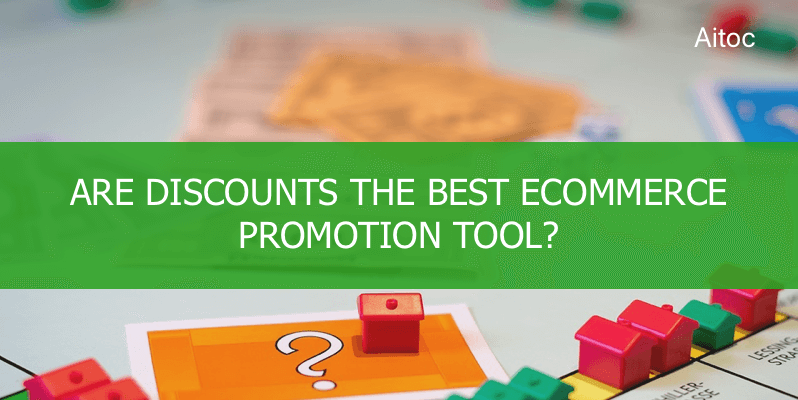
Discounts are probably one of the most used marketing tools helping online retailers to entice customers to make a purchase. The effectiveness of discounts has been proved over years, and this approach remains a go-to choice for the majority of merchants.
Why Would an Online Retailer Want to Offer Discounts?
Usually, the main reasons are quite common:
- Move obsolete and out-of-date stock;
- Increase short-term sales;
- Persuade customers to try out your new product;
- Reward the most valued customers and increase their loyalty.
Also, by promising substantial savings, merchants attract new customers and get more attention among the online community.
Do They Really Work?
Surely, those extra sales driven by discounts can bring more profit in the long run if they attract new customers who will keep returning to your store and purchase for a full price. In this case, a small portion of the margin you’re sacrificing brings you new customers, and thus more sales in the long run.
However, along with the new customers brought in by your discount offer, your existing customers will also be prompted to get the better deal. Are those sales as profitable? Maybe, if they build up the loyalty of your existing customers. Or maybe not, if the customers are not going to change their buying patterns in the long run because of using your discount offer.
Customers buy not the products per se, they buy solutions to their problems. If you are able to convey the value and the benefit of this solution to your customers, they might be willing to buy it for the full price. But if from their point of view the product is useless, it makes no difference how low you discount your price. In most cases, they will look somewhere else until they find the solution that fits their needs. So by discounting original prices, you create a harmful precedent: you shift the emphasis from product value to price, thus reducing the perceived value of your product.
Some shoppers always seek for the best deals and are not loyal to any retailer (unless one retailer always offers the best deal on any product). So when you provide a one-time discount, they might buy from you, but most probably they will ask for a discount next time, too. If you refuse they will be more likely to wait for the next sale or turn to your competitors looking for a better deal. Not much use in providing a discount to those shoppers, right?

Let's Do Some Calculations
Now let’s do some math and see how a 10% discount can impact profit margins:
Let’s say your product price is $10, the net cost is $7. Let’s assume you sell 10 items per month.
Regular sales of 10 units give you $100
Net costs are 10x$7 =$70
Your regular margin is $30
With a 10% discount, you get only $20 margin (10x$9 - 10x$7). But here we totally discard the extra operational expense needed to set up discounts rule, additional advertising, and overtime of your stuff to handle all clients. So your profit margin drops from $30 to at least $20.
The quick calculation shows that to keep the profit margin equal to that before the discount you will need to sell 15 items that are 50% more than your usual sales volume.
So, Are Discounts That Effective?
By those simple numbers, we want to illustrate that discounts may have a devastating effect on your profit if provided recklessly. Even if your customers find the discount very attractive and buy more than they would usually do, they stock up on a product and don’t buy it later on until they run out of that overstock. So you may generate more profit now but lose your regular profits later.
Yet discounts can be an effective way to drive sales. In most cases, discounts are used too carelessly and too often because many merchants like the positive effects and do not fully understand the negative impact such as cutting down the perceived value of the product or profit margin decrease.
It’s essential that you do some strategic thinking before providing discounts in your store do. Analyze all the factors including your net costs, average profit margins, regular sales volume, average sales volume, as well as customer behavior. This analysis will let you choose the right discount strategy for rewarding your customers.
Here are some promotions techniques that can be used as an alternative to conventional discounts:
- Offer your customers a bonus. You get more sales by providing an added value to the product rather than by dropping a price.
- Offer a special coupon (conditional or unconditional) that is not apparent to all of the potential customers and share it with the target audience via a follow-up email.
- Offer individual discounts to specific customers in cases when those discounts allow you to build a better, long-lasting relationship with those customers.
- Offer bundled deals. They can help you increase your transaction size.
- Launch a discount program that offers accrual discounts, thus rewarding your loyal customers and securing the long run sales.
- Consider volume discounts. The more products your customer gets, the lower the price becomes. This way customers might spend more than they initially intended.
What is your approach to discounts? Please share your thoughts and experience in the comments below.
